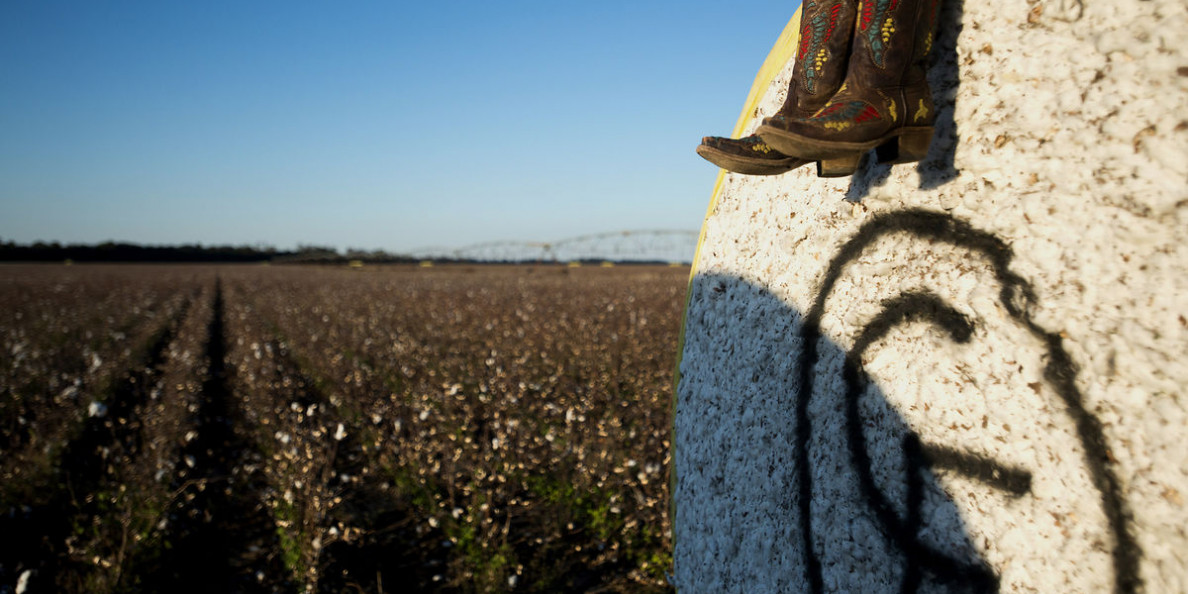September 13, 2024
Is USDA underestimating September production in this month’s World Agricultural Supply and Demand Estimates (WASDE) report, or is it truly as low as it claims? Meanwhile, U.S. inflation hits a three-year low, shifting focus to next week’s Fed meeting. Get QuickTake’s read on the week’s events in five minutes.
- December futures increased 94 points, settling at 70.38 cents per pound.
- Cotton prices traded higher in three of the five sessions this week. Hurricane Francine, technical buying, and a surprise WASDE caused some short covering in the market.
- The daily volume traded was decent during this week’s rally. The total number of open contracts increased by 824 to 230,081.
The September WASDE report came as a bullish surprise to the cotton market.
- U.S. production was cut 600,000 bales to 14.51 million bales. This surprised the market, as many anticipated a slight increase in the U.S. crop.
- The number of bales the U.S. is projected to export dropped by 200,000 bales to 11.8 million bales. These changes flowed into ending stocks, which decreased by 500,000 to 4 million bales.
- The significant change in production came from the Southwest region, which dropped 494,000 to 4.686 million bales. Upland production in Texas decreased 400,000 to 4.1 million bales, and Pima production fell 4,000 to 56,000 bales. Oklahoma decreased 80,000 to 350,000 bales, and Kansas decreased 10,000 to 180,000 bales.
- The global side of the balance sheet saw a few notable changes. Demand has been and will remain a concern during this crop year. That was noted in the 460,000 bale decrease in global consumption, bringing the total to 115.75 million bales.
- Global production decreased 1.2 million bales, mainly due to reductions in the U.S., Indian, and Pakistani crops.
- Chinese imports decreased 500,000 bales to 9.5 million bales. China has been noticeably absent from the market, and expectations of increased demand from the country are minimal.
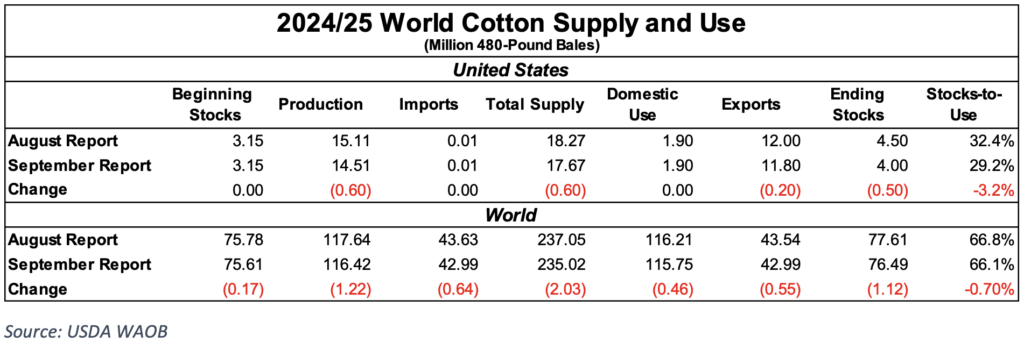
U.S. inflation in August reached the lowest level since 2021, and a quarter-point interest rate cut is expected next week.
- Headline U.S. Consumer Price Index (CPI) rose at an annualized rate of 2.5% in August, hitting a three-year low. Core CPI, however, was hotter than expected, increasing at an annualized rate of 3.2%.
- August U.S. Producer Price Index (PPI) rose 1.7% year-over-year, which aligns with expectations.
- The European Central Bank cut interest rates 25 basis points this week. This is the second rate the ECB has made in the past three months, widening a policy gap with the Federal Reserve.
- Crude oil prices dropped to their lowest level since December 2021 due to demand concerns but later found support as Hurricane Francine disrupted U.S. production in the Gulf of Mexico.
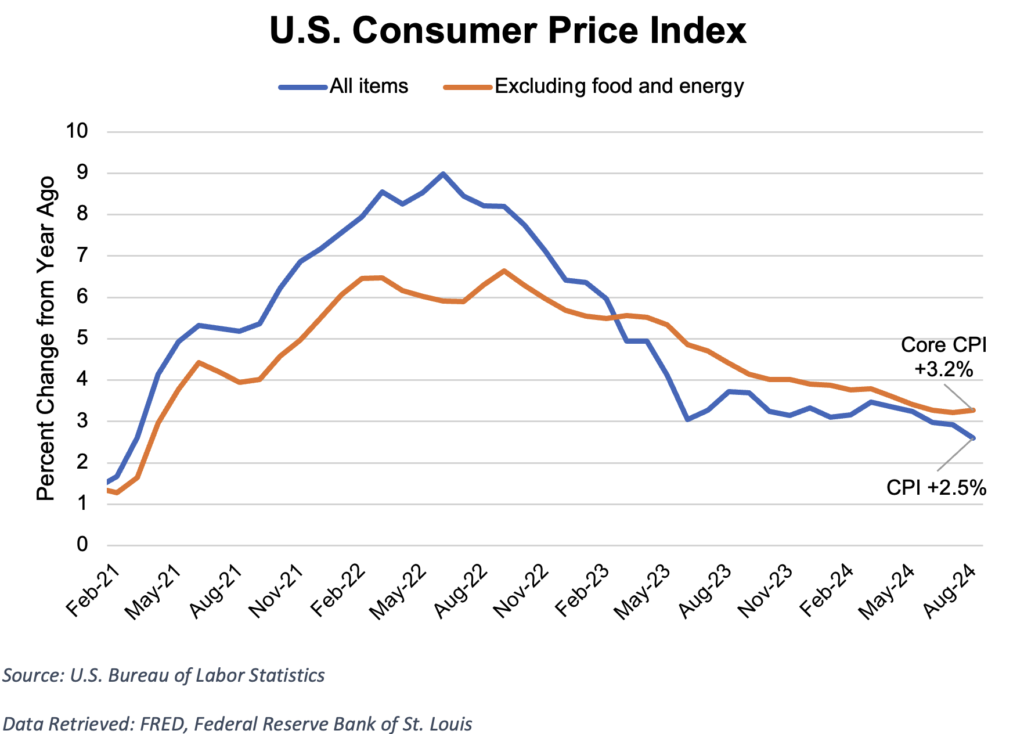
The U.S. Export Sales Report showed that while sales were average, shipments were disappointing.
- For the 2024/25 marketing year, 116,100 Upland bales were booked for the week.
- Shipments of 119,100 bales were below average for this time of the year.
- Pima merchandisers sold 10,600 bales for the week and exported 7,400 bales.
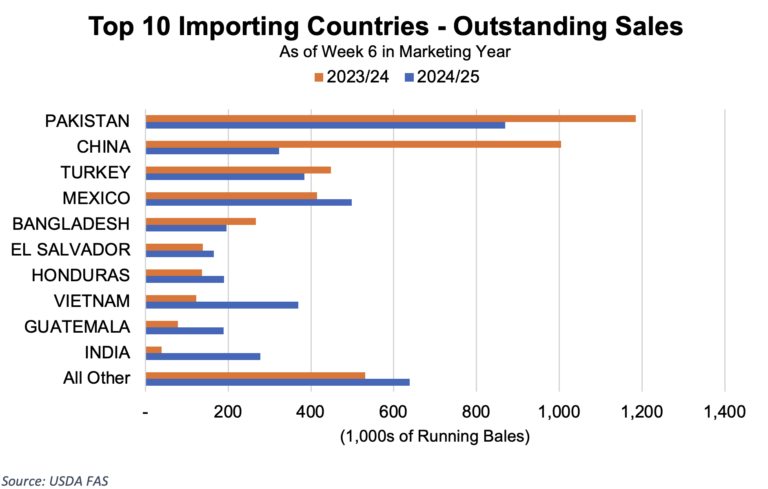
The overall percentage of the crop rated good to excellent in the U.S. decreased to 40%.
- This week, the percentage of crops rated good to excellent in Texas decreased 7% to 29%. Oklahoma’s good to excellent rating decreased 2% to 35%, and Kansas’s increased 6% to 52%.
- In the U.S., 45% of bolls are open, and 8% of the crop has been harvested.
- Hurricane Francine made landfall along the Louisiana coast on Wednesday. Heavy rain and strong winds were present in parts of the Delta. The open cotton in this area is susceptible to damage and discoloration from rain and wind. Warmer weather will be needed to dry out the fields where the crop was open or to finish the final stages of maturation.
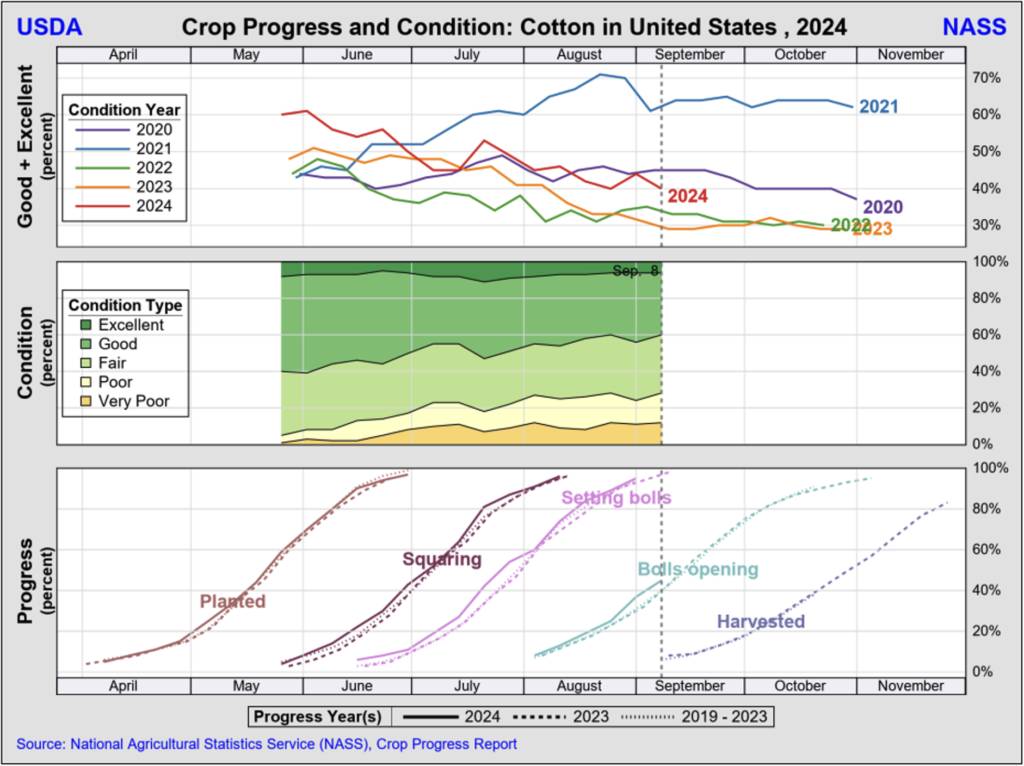
The Week Ahead
- The Federal Open Market Committee (FOMC) will meet on September 17 and 18. On Wednesday, markets expect interest rates to be cut by 0.25%.
- In addition to the meeting, August Retail Sales will be reported on Tuesday, September 17.
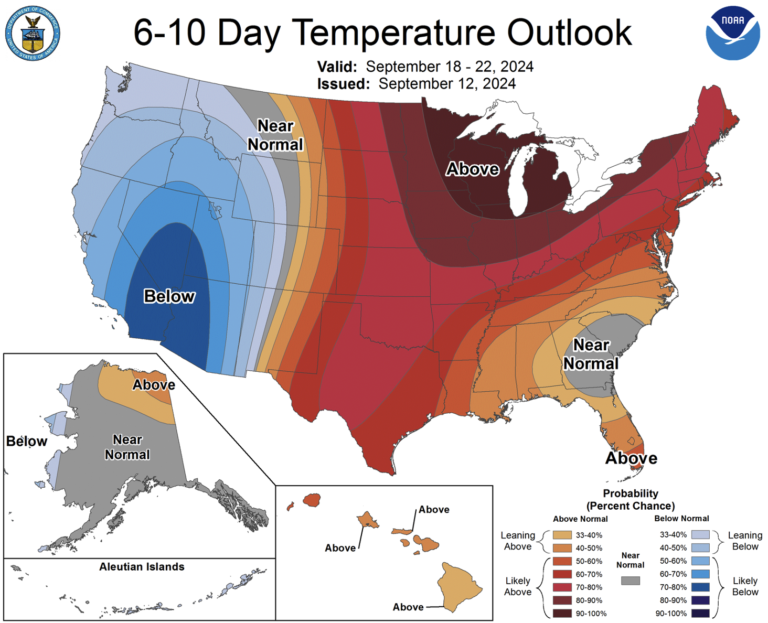
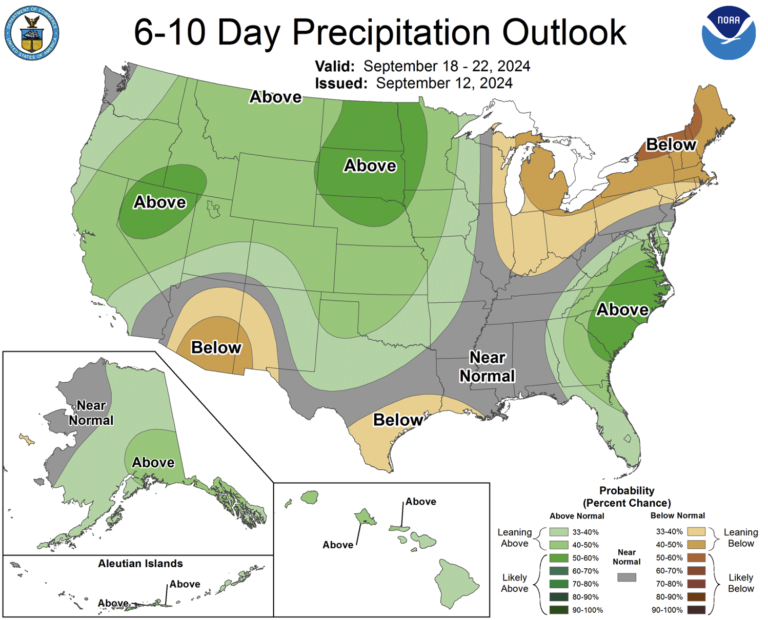
The Seam
As of Thursday afternoon, grower offers totaled 15,199 bales. There were 6,940 bales that traded on G2B platform with an average price of 61.47 cents per lb. The average loan was 51.62, resulting in a premium of 9.85 cents per lb. over the loan.


